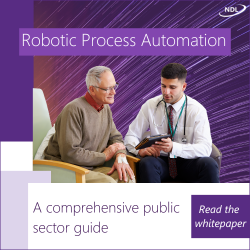Institution of Engineering and Technology says rise of smartphone requires a greater emphasis on data in contacting emergency services
Radical changes are needed in the emergency 999 call service to reflect people’s growing dependence on smartphones, according to the Institution of Engineering and Technology (IET).
It has issued the call after communications regulator Ofcom published its annual Communications Market Report with a description of the UK as a “smartphone society”, in which the devices have overtaken laptops as the most widely used.
The IET said that urgent action is needed to keep pace with the change from landlines to smartphones, towards the use of wearable technology, and from voice to data.
It has emphasised the need for a data-based emergency service that would allow people to text alerts through any appropriate app on an easy-to-remember special number, which could be 999. The alerts would then be passed to a human emergency operator.
The main engineering challenge would be to set up priority routing of alerts to the number in order to avoid delays at busy times. This needs to be arranged in consultation with the main mobile and app-based text providers, and with makers of new technology such as wearables.
Urgent need
Professor Will Stewart, a member of the IET Communications Policy Panel, said: “The data from Ofcom highlights the urgent need for radical changes to be made to the 999 emergency service so that those in need can text as well as call.
“Much of the technology we need to update our emergency service is available today. But we urgently need to make progress now, with clear ownership from government and ministerial leadership.”
The IET recently published a report, Contacting Emergency Services in the Digital Age, which says younger people are more likely to use data services than voice, and that the emergency services should harness the features of mobile phones including call trace, video and GPS-enhanced mapping.
This would reflect an upgrading of emergency control room systems for them to use richer information, and could provide the scope for reducing costs over the next three years if the efforts begin soon.
It calls for the creation of a preliminary working group from organisations such as Ofcom, the British Standards Institute and the 5G Innovation Centre, a LinkedIn group to share documents, and a series of ‘hackathons’ to get young developers and entrepreneurs developing experimental systems.
Integration and standards
Longer term objectives are an integrated approach for the use of all digital devices – including tablet computers and smart TVs – and standards for alert calls. The latter needs to cover: interfaces for alerting systems and applications to enable the open development of devices and systems; standard user interfaces to help people understand how to make a call on an unfamiliar device; and global mobile standards for all mass produced smartphones.
The IET has also published a report on a meeting with the Cabinet Office in July, which says there was agreement about the need for action and would need ministerial leadership as the services crosses a number of government and industry silos.
There was also a consensus around the needs for standards, for younger people to be involved in the development, and for action to be taken within months rather than year.
Ofcom’s report highlights that 33% of internet users now see the smartphone as their most important devices for going online, compared with 30% for laptops; although when it comes to internet surfing there is still a clear preference for the latter.
It also says that 66% of UK adults now carry a smartphone, with the figure rising to 90% for 16-24 year-olds, and that there has been a surge of subscriptions to 4G services, which hit 23.6 million by the end of last year. 4G users are making more use of their smartphones, which adds to the case for emergency services to make more use of data.
Image: Emergency telephone near Logan Rock. Sarah Charlesworth, CC BY-SA 2.0 via Wikimedia Commons




